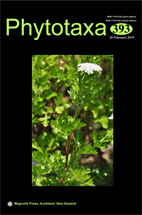Abstract
The Yunnan boast three broad-leaved forests, the semi-wet evergreen broad-leaved forest (SWEB) occurring in subtropical plateaus areas, the lower montane evergreen broad-leaved forest (LMEB) in tropical lower montane, and the upper montane evergreen broad-leaved forest (UMEB) in subtropical upper montane regions. Floristic composition and biogeography of these evergreen broad-leaved forests are studied and their diversification and divergence are revealed. I found similarities across the three forest types with species-rich families tending to have cosmopolitan distributions and families with less species exhibiting other distribution types. In biogeographical elements, the SWEB and the UMEB showed similar affinity in the proportion of tropical elements comprising total genera, specifically 45% and 44% respectively, and temperate elements totaling 46% and 48%, of all genera with northern temperate distribution comprising the highest ratio (18% in the SWEB and 20% in the UMEB ). LMEB tropical elements comprised 79% of the total genera, with tropical Asian distributed elements contributing the highest ratio (27%). While the three forest floras comprised of similar families, the same is not true at the genus and species levels. I suggest our results indicate divergence of the three forest floras, possibly from events in the geological history of Yunnan. From recent palaeobotanical studies, the diversification of floras of these evergreen broad-leaved forests in Yunnan occurred during the late Miocene with increased divergence with time in response not only to altitude changes and at the same time global cooling in Yunnan, but also the southeastward extrusion of Indochina geoblock influencing LMEB, and the Himalayan uplift affecting the floras of SWEB and UMEB.

